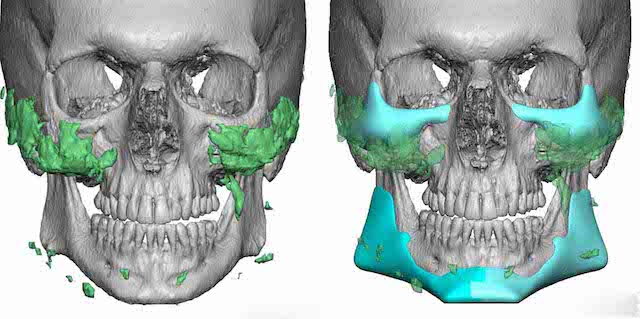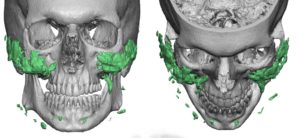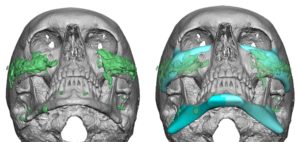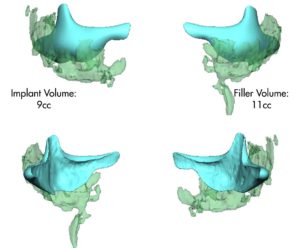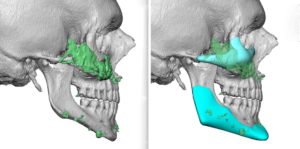Background: In facial augmentation there are three methods to do so…injectable fillers, injectable fat and synthetic implants. Each has their own distinct advantages and disadvantages but none of these methods are perfect. With some surgeons advocate one over the other the reality is that they all have a valuable role to play and one often leads to another.
This is seen in the synthetic filler to implant transition. It is very common to see patients that have had prior or indwelling synthetic fillers present for facial implants, particularly custom facial implants. A common question in this situation is whether the injectable fillers should be dissolved during the implant design process and before the actual surgery. That would depend on how much filler volume is present and how long it has been there.
But some injectable fillers are not reversible and only time will make them absorbed. This is true for Radiesse injectable filler which is also the only injectable filler capable of being seen radiographically. It shows up quite clearly on 3D CT scan due to its mineralized content of hydroxyapatite spheres. With this type of injectable filler one would have to wait up to a year or longer for it to go away. Or one could measure the volume that it currently occupies and use that in how to design the implants.
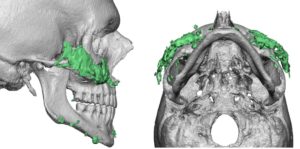
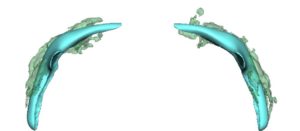
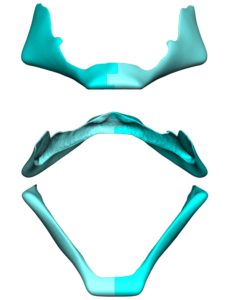
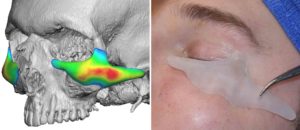

Injectable fillers can serve as a guide for custom facial implant designs. They do not provide the specifics of the implant dimensions but their placement location and volume provide a guide as to what type of aesthetic result the patient may be seeking.
Case Highlights:
1) Injectable fillers are often the first step in facial augmentation and can serve as a guide for desired volumes and location of permanent facial implants.
2) With injectable fillers in place the design of custom facial implants must take their eventual resorbing volumes into consideration.
3) Custom infraorbital-malar and jawline implants are done together to create a strong facial masculinization effect.
Dr. Barry Eppley
Indianapolis, Indiana

